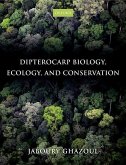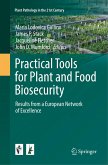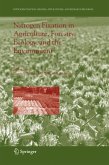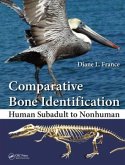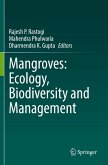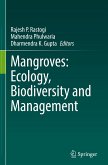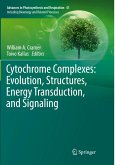Carrion Ecology, Evolution, and Their Applications
Herausgeber: Tarone, Aaron M.; Benbow, M. Eric; Tomberlin, Jeffery K.
Carrion Ecology, Evolution, and Their Applications
Herausgeber: Tarone, Aaron M.; Benbow, M. Eric; Tomberlin, Jeffery K.
- Gebundenes Buch
- Merkliste
- Auf die Merkliste
- Bewerten Bewerten
- Teilen
- Produkt teilen
- Produkterinnerung
- Produkterinnerung
This second edition has nine brand new chapters and the remaining 24 substantially updated. It showcases a broader scope of topics, geographic areas, ecosystems and history of carrion ecology, evolution and their applications for humanity, providing the most comprehensive resource on carrion from all ecosystems of the world.
Andere Kunden interessierten sich auch für
![Dipterocarp Biology, Ecology, and Conservation Dipterocarp Biology, Ecology, and Conservation]() Jaboury GhazoulDipterocarp Biology, Ecology, and Conservation130,99 €
Jaboury GhazoulDipterocarp Biology, Ecology, and Conservation130,99 €![Practical Tools for Plant and Food Biosecurity Practical Tools for Plant and Food Biosecurity]() Practical Tools for Plant and Food Biosecurity93,99 €
Practical Tools for Plant and Food Biosecurity93,99 €![Nitrogen Fixation in Agriculture, Forestry, Ecology, and the Environment Nitrogen Fixation in Agriculture, Forestry, Ecology, and the Environment]() Nitrogen Fixation in Agriculture, Forestry, Ecology, and the Environment161,99 €
Nitrogen Fixation in Agriculture, Forestry, Ecology, and the Environment161,99 €![Comparative Bone Identification Comparative Bone Identification]() Diane L FranceComparative Bone Identification416,99 €
Diane L FranceComparative Bone Identification416,99 €![Mangroves: Ecology, Biodiversity and Management Mangroves: Ecology, Biodiversity and Management]() Mangroves: Ecology, Biodiversity and Management166,99 €
Mangroves: Ecology, Biodiversity and Management166,99 €![Mangroves: Ecology, Biodiversity and Management Mangroves: Ecology, Biodiversity and Management]() Mangroves: Ecology, Biodiversity and Management161,99 €
Mangroves: Ecology, Biodiversity and Management161,99 €![Cytochrome Complexes: Evolution, Structures, Energy Transduction, and Signaling Cytochrome Complexes: Evolution, Structures, Energy Transduction, and Signaling]() Cytochrome Complexes: Evolution, Structures, Energy Transduction, and Signaling242,99 €
Cytochrome Complexes: Evolution, Structures, Energy Transduction, and Signaling242,99 €-
-
-
This second edition has nine brand new chapters and the remaining 24 substantially updated. It showcases a broader scope of topics, geographic areas, ecosystems and history of carrion ecology, evolution and their applications for humanity, providing the most comprehensive resource on carrion from all ecosystems of the world.
Hinweis: Dieser Artikel kann nur an eine deutsche Lieferadresse ausgeliefert werden.
Hinweis: Dieser Artikel kann nur an eine deutsche Lieferadresse ausgeliefert werden.
Produktdetails
- Produktdetails
- Verlag: Taylor & Francis Ltd
- Seitenzahl: 704
- Erscheinungstermin: 28. Mai 2025
- Englisch
- Abmessung: 280mm x 210mm
- Gewicht: 453g
- ISBN-13: 9781032364469
- ISBN-10: 1032364467
- Artikelnr.: 72111130
- Herstellerkennzeichnung
- Libri GmbH
- Europaallee 1
- 36244 Bad Hersfeld
- gpsr@libri.de
- Verlag: Taylor & Francis Ltd
- Seitenzahl: 704
- Erscheinungstermin: 28. Mai 2025
- Englisch
- Abmessung: 280mm x 210mm
- Gewicht: 453g
- ISBN-13: 9781032364469
- ISBN-10: 1032364467
- Artikelnr.: 72111130
- Herstellerkennzeichnung
- Libri GmbH
- Europaallee 1
- 36244 Bad Hersfeld
- gpsr@libri.de
Dr. M. Eric Benbow is an Assistant Professor in the Departments of Entomology and Osteopathic Medical Specialties at Michigan State University. The research in his lab focuses on microbial-invertebrate community interactions in aquatic ecosystems, disease systems and carrion ecology and evolution. All of these research foci use basic science to inform applications in areas such as human health, natural resources management and forensics. Dr. Benbow has authored or co-authored a collection of over 100 peer-reviewed papers, book chapters, and proceedings, many of which relate to carrion decomposition ecology. He has served on a National Research Council committee related to aquatic ecology, and is regularly invited as a speaker at international and national academic meetings related to aquatic, disease and decomposition ecology. Dr. Benbow has led workshops at the international level discussing experimental design, statistical analyses and the importance of novel basic ecological concepts in advancing the field of carrion ecology and applications in forensics. Dr. Benbow was part of the inaugural executive committee for the North American Forensic Entomology Association (NAFEA) where he served as the Editor-in-Chief of the annual NAFEA Newsletter and NAFEA Webmaster (www.nafea.net) for eight years. He was the president of NAFEA from 2012-2013 and has served as an expert witness and worked on several cases that involved insects as evidence during investigations or water resource litigation. He continues a recognized research program in microbe-insect interactions that supports undergraduate and graduate students and postdoctoral associates. Dr. Benbow continues to mentor and co-mentor students and postdoctoral associates through research and teaching. He sees the future of ecology and evolution to fundamentally be in the hands of students and early scientists worldwide. Dr. Jeffery K. Tomberlin is an associate professor and co-director of the Forensic & Investigative Sciences Program and principal investigator of the Forensic Laboratory for Investigative Entomological Sciences (FLIES) facility (forensicentomology.tamu.edu) in the Department of Entomology at Texas A&M University. Research in the FLIES facility examines species interactions on ephemeral resources such as vertebrate carrion, decomposing plant material, and animal wastes to better understand the mechanisms regulating arthropod behavior related to arrival, colonization, and succession patterns. The goals of his program are to refine current methods used by entomologists in forensic investigations. His research is also focused on waste management in confined animal facilities and the production of alternate protein sources for use as livestock, poultry, and aquaculture feed. Since arriving on campus at Texas A&M University in 2007, six PhD and eight MS students have completed their degrees under his supervision. Dr. Tomberlin welcomes those who are interested in collaborating or gaining experience in forensic entomology or other areas of his research to visit the FLIES facility. Dr. Tomberlin has been very active within the forensic science community. He, along with a colleague, initiated the first forensic entomology conference in North America as well as the formation of the North America Forensic Entomology Association, of which he served as the first president. He is also a Fellow in the American Academy of Forensic Sciences and has served as the chair of the Pathology/Biology Section. Dr. Tomberlin is also one of the 17 entomologists who are board certified by the American Board of Forensic Entomology (ABFE). He has served several roles within the ABFE including secretary and chair. Dr. Aaron M. Tarone is an assistant professor in the Department of Entomology at Texas A&M University. He teaches in the in the Forensic & Investigative Sciences Program housed in that Department and is part of the Texas A&M University Ecology and Evolutionary Biology Doctoral Program. Dr. Tarone is a member of the Genetics Society of America, the Entomological Society of America, and the North American Forensic Entomology Association. Research in his laboratory is centered on genetic studies of development time and body size both in model organisms like Drosophila melanogaster and in carrion feeding blow flies. Dr. Tarone has also been a leader in developing genomic tools for non-model organisms, including carrion feeding insects. He has been involved in genomic projects related to carrion biology that have been funded by Texas A&M University and the National Institute of Justice and he assisted in the annotation of the Tsetse genome. He hopes to use knowledge gained from his research to increase the accuracy and precision of estimates of insect age in forensic investigations while simultaneously furthering basic knowledge in the evolutionary ecology of carrion systems.
Foreword
About the editors
List of contributors
Acknowledgements
Section I: Introduction to the study of Carrion Ecology and Evolution
1. Introduction to Carrion, Ecology, Evolution and Their Applications. 2.
The Carrion Necrobiome. 3. Overview of Carrion Biology. 4. Design and
Analysis of Field Studies in Carrion Ecology. 5. Aggregate Carrion Ecology:
Mass Mortality Events. 6. Role of Carrion Resources in Ecological Theory.
Section II: Ecological Mechanisms of Carrion Decomposition
7. Processes and Mechanisms of Death and Decomposition of Vertebrate
Carrion in Terrestrial Systems. 8. Microbial Ecology of Terrestrial Carrion
Decomposition via Multi-omics. 9. Terrestrial Carrion Decomposition
Bacteriology. 10. Arthropod Communities of Terrestrial Vertebrate Carrion.
11. Chemical Ecology of Vertebrate Carrion. 12. Ecological Role of
Vertebrate Scavengers. 13. Vertebrate Carrion as a Model for Conducting
Behavior Research. 14. Modeling Species Interactions within Vertebrate
Carrion Food Webs. 15. Carrion Effects on Belowground Communities and
Consequences for Soil Processes. 16. Community and Landscape Ecology of
Carrion. 17. The Role of Carrion in Terrestrial Ecosystems. 18.
Terrestrial Ecology of African Carrion. 19. Ecology of Vertebrate and
Invertebrate Scavengers of Australian Carrion in Terrestrial Environments.
20. Carrion Decomposition in Aquatic Systems: An Introduction. 21. Role of
Aquatic and Terrestrial Carcasses in Freshwater Ecosystems.
Section III: Evolutionary Ecology of Carrion
22. Ecological Genetics of Carrion and Dung Decomposers. 23. Microbial
Genetics and Systematics. 24. Population Genetics and Molecular Evolution
of Carrion-Associated Arthropods. 25. Sociality and The Necrobiome. 26.
Carrion and Dung Mimicry in Plants. 27. Interkingdom Ecological
Interactions During Carrion Decomposition.
Section IV: Applications of Carrion Decomposition
28. Carrion Communities as Indicators in Fisheries, Wildlife Management,
and Conservation. 29. Composting As a Method of Livestock Carrion Disposal.
30. Human Decomposition and Forensics. 31. Death, History and Archeology.
32. From Forensics and Human Health to Animal Feed: The Story of
Necrophagous Flies and Insect Agriculture. 33. Future Opportunities in
Carrion Ecology and Evolution.
Index
About the editors
List of contributors
Acknowledgements
Section I: Introduction to the study of Carrion Ecology and Evolution
1. Introduction to Carrion, Ecology, Evolution and Their Applications. 2.
The Carrion Necrobiome. 3. Overview of Carrion Biology. 4. Design and
Analysis of Field Studies in Carrion Ecology. 5. Aggregate Carrion Ecology:
Mass Mortality Events. 6. Role of Carrion Resources in Ecological Theory.
Section II: Ecological Mechanisms of Carrion Decomposition
7. Processes and Mechanisms of Death and Decomposition of Vertebrate
Carrion in Terrestrial Systems. 8. Microbial Ecology of Terrestrial Carrion
Decomposition via Multi-omics. 9. Terrestrial Carrion Decomposition
Bacteriology. 10. Arthropod Communities of Terrestrial Vertebrate Carrion.
11. Chemical Ecology of Vertebrate Carrion. 12. Ecological Role of
Vertebrate Scavengers. 13. Vertebrate Carrion as a Model for Conducting
Behavior Research. 14. Modeling Species Interactions within Vertebrate
Carrion Food Webs. 15. Carrion Effects on Belowground Communities and
Consequences for Soil Processes. 16. Community and Landscape Ecology of
Carrion. 17. The Role of Carrion in Terrestrial Ecosystems. 18.
Terrestrial Ecology of African Carrion. 19. Ecology of Vertebrate and
Invertebrate Scavengers of Australian Carrion in Terrestrial Environments.
20. Carrion Decomposition in Aquatic Systems: An Introduction. 21. Role of
Aquatic and Terrestrial Carcasses in Freshwater Ecosystems.
Section III: Evolutionary Ecology of Carrion
22. Ecological Genetics of Carrion and Dung Decomposers. 23. Microbial
Genetics and Systematics. 24. Population Genetics and Molecular Evolution
of Carrion-Associated Arthropods. 25. Sociality and The Necrobiome. 26.
Carrion and Dung Mimicry in Plants. 27. Interkingdom Ecological
Interactions During Carrion Decomposition.
Section IV: Applications of Carrion Decomposition
28. Carrion Communities as Indicators in Fisheries, Wildlife Management,
and Conservation. 29. Composting As a Method of Livestock Carrion Disposal.
30. Human Decomposition and Forensics. 31. Death, History and Archeology.
32. From Forensics and Human Health to Animal Feed: The Story of
Necrophagous Flies and Insect Agriculture. 33. Future Opportunities in
Carrion Ecology and Evolution.
Index
Foreword
About the editors
List of contributors
Acknowledgements
Section I: Introduction to the study of Carrion Ecology and Evolution
1. Introduction to Carrion, Ecology, Evolution and Their Applications. 2.
The Carrion Necrobiome. 3. Overview of Carrion Biology. 4. Design and
Analysis of Field Studies in Carrion Ecology. 5. Aggregate Carrion Ecology:
Mass Mortality Events. 6. Role of Carrion Resources in Ecological Theory.
Section II: Ecological Mechanisms of Carrion Decomposition
7. Processes and Mechanisms of Death and Decomposition of Vertebrate
Carrion in Terrestrial Systems. 8. Microbial Ecology of Terrestrial Carrion
Decomposition via Multi-omics. 9. Terrestrial Carrion Decomposition
Bacteriology. 10. Arthropod Communities of Terrestrial Vertebrate Carrion.
11. Chemical Ecology of Vertebrate Carrion. 12. Ecological Role of
Vertebrate Scavengers. 13. Vertebrate Carrion as a Model for Conducting
Behavior Research. 14. Modeling Species Interactions within Vertebrate
Carrion Food Webs. 15. Carrion Effects on Belowground Communities and
Consequences for Soil Processes. 16. Community and Landscape Ecology of
Carrion. 17. The Role of Carrion in Terrestrial Ecosystems. 18.
Terrestrial Ecology of African Carrion. 19. Ecology of Vertebrate and
Invertebrate Scavengers of Australian Carrion in Terrestrial Environments.
20. Carrion Decomposition in Aquatic Systems: An Introduction. 21. Role of
Aquatic and Terrestrial Carcasses in Freshwater Ecosystems.
Section III: Evolutionary Ecology of Carrion
22. Ecological Genetics of Carrion and Dung Decomposers. 23. Microbial
Genetics and Systematics. 24. Population Genetics and Molecular Evolution
of Carrion-Associated Arthropods. 25. Sociality and The Necrobiome. 26.
Carrion and Dung Mimicry in Plants. 27. Interkingdom Ecological
Interactions During Carrion Decomposition.
Section IV: Applications of Carrion Decomposition
28. Carrion Communities as Indicators in Fisheries, Wildlife Management,
and Conservation. 29. Composting As a Method of Livestock Carrion Disposal.
30. Human Decomposition and Forensics. 31. Death, History and Archeology.
32. From Forensics and Human Health to Animal Feed: The Story of
Necrophagous Flies and Insect Agriculture. 33. Future Opportunities in
Carrion Ecology and Evolution.
Index
About the editors
List of contributors
Acknowledgements
Section I: Introduction to the study of Carrion Ecology and Evolution
1. Introduction to Carrion, Ecology, Evolution and Their Applications. 2.
The Carrion Necrobiome. 3. Overview of Carrion Biology. 4. Design and
Analysis of Field Studies in Carrion Ecology. 5. Aggregate Carrion Ecology:
Mass Mortality Events. 6. Role of Carrion Resources in Ecological Theory.
Section II: Ecological Mechanisms of Carrion Decomposition
7. Processes and Mechanisms of Death and Decomposition of Vertebrate
Carrion in Terrestrial Systems. 8. Microbial Ecology of Terrestrial Carrion
Decomposition via Multi-omics. 9. Terrestrial Carrion Decomposition
Bacteriology. 10. Arthropod Communities of Terrestrial Vertebrate Carrion.
11. Chemical Ecology of Vertebrate Carrion. 12. Ecological Role of
Vertebrate Scavengers. 13. Vertebrate Carrion as a Model for Conducting
Behavior Research. 14. Modeling Species Interactions within Vertebrate
Carrion Food Webs. 15. Carrion Effects on Belowground Communities and
Consequences for Soil Processes. 16. Community and Landscape Ecology of
Carrion. 17. The Role of Carrion in Terrestrial Ecosystems. 18.
Terrestrial Ecology of African Carrion. 19. Ecology of Vertebrate and
Invertebrate Scavengers of Australian Carrion in Terrestrial Environments.
20. Carrion Decomposition in Aquatic Systems: An Introduction. 21. Role of
Aquatic and Terrestrial Carcasses in Freshwater Ecosystems.
Section III: Evolutionary Ecology of Carrion
22. Ecological Genetics of Carrion and Dung Decomposers. 23. Microbial
Genetics and Systematics. 24. Population Genetics and Molecular Evolution
of Carrion-Associated Arthropods. 25. Sociality and The Necrobiome. 26.
Carrion and Dung Mimicry in Plants. 27. Interkingdom Ecological
Interactions During Carrion Decomposition.
Section IV: Applications of Carrion Decomposition
28. Carrion Communities as Indicators in Fisheries, Wildlife Management,
and Conservation. 29. Composting As a Method of Livestock Carrion Disposal.
30. Human Decomposition and Forensics. 31. Death, History and Archeology.
32. From Forensics and Human Health to Animal Feed: The Story of
Necrophagous Flies and Insect Agriculture. 33. Future Opportunities in
Carrion Ecology and Evolution.
Index


